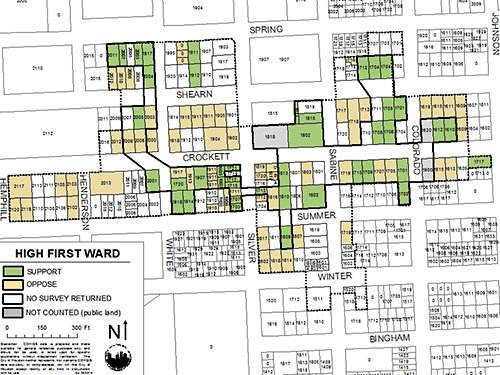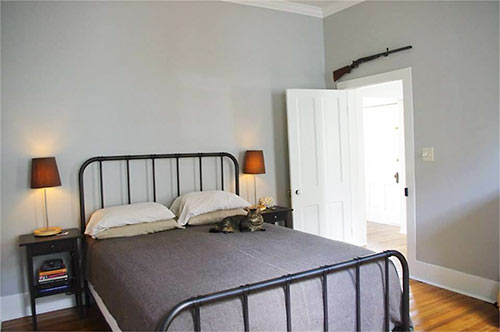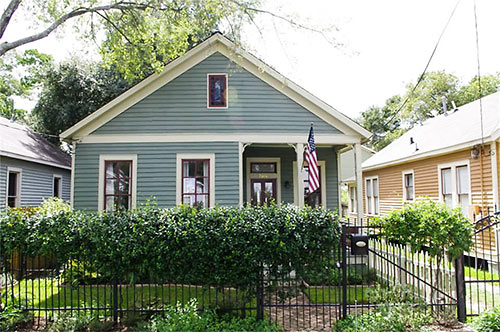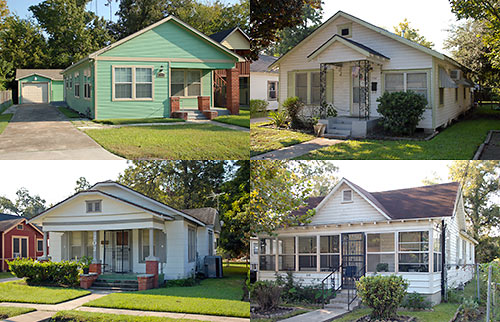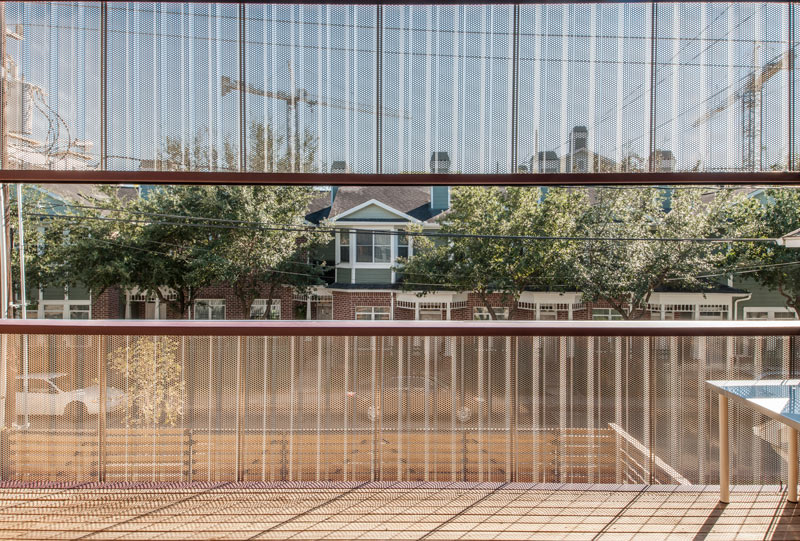
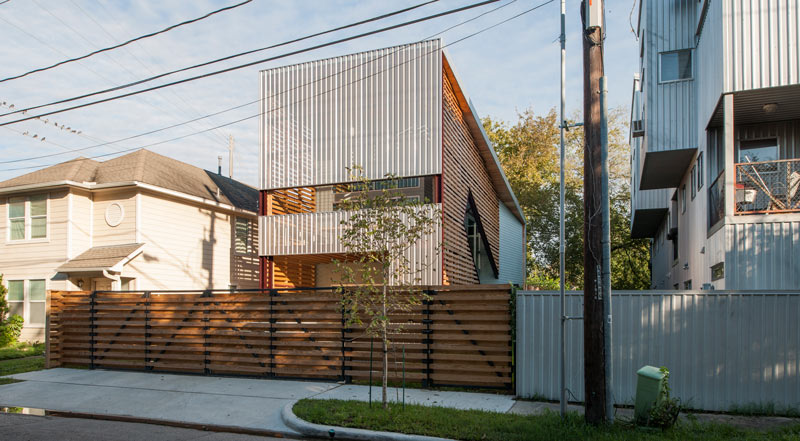
From the inside out and the outside looking in, here’s a peek through the semi-see-through mesh facade of University of Houston architecture professor Zui Ng’s Shotgun Chameleon house, located just east of the intersection of Cleveland and Gillette streets in the Freedmen’s Town National Historic District. The 2-story 3-bedroom home was named Architectural Record‘s house of the month last month, and was originally designed for a 2006 expo of building ideas for post-Katrina New Orleans. The space can be used as a duplex or a split home-office setup thanks to a set of exterior stairs leading to the upper floor.
The design’s appearance can also be adapted to blend in with different neighborhoods and urban settings. The metal mesh, which covers most of the upstairs balcony on the street-facing side of the building, could provide a scaffolding for leafy cover, or could get wooden siding tacked over it to help the structure fit in with similarly-adorned neighbors. Ng says the front could even go commercial, with the upstairs hosting a billboard for a downstairs business, or go high-tech, with options ranging from solar panel arrays to breeze-catching louver arrangements.
The Chameleon is shown above between a metal-skinned contemporary house and an older wood-sided home. Here’s a view from the back side, which is shorter due to the structure’s sloped roof:Â
CONTINUE READING THIS STORY
Blending In in Freedmen’s Town
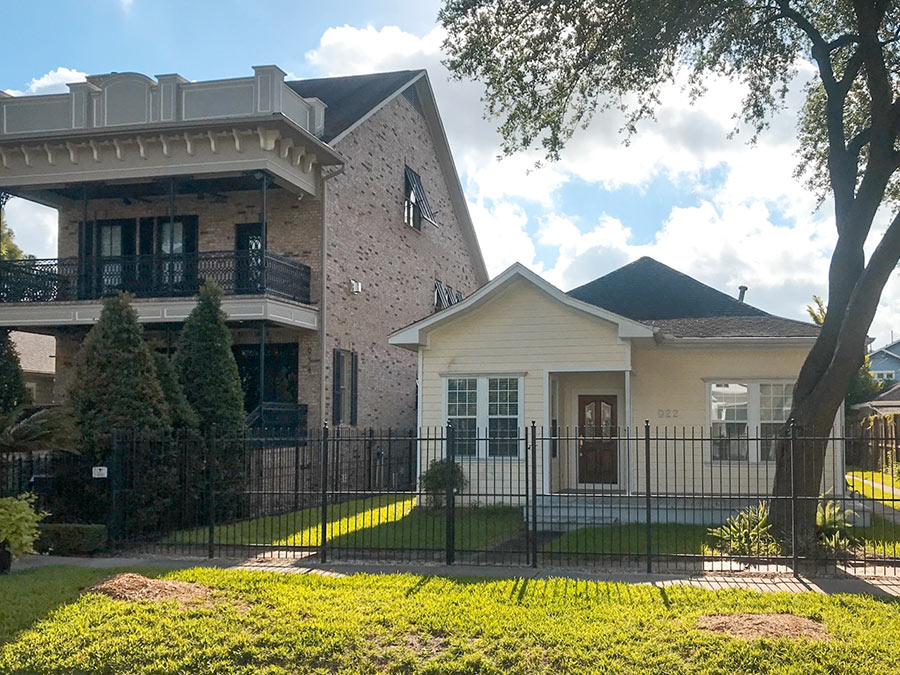
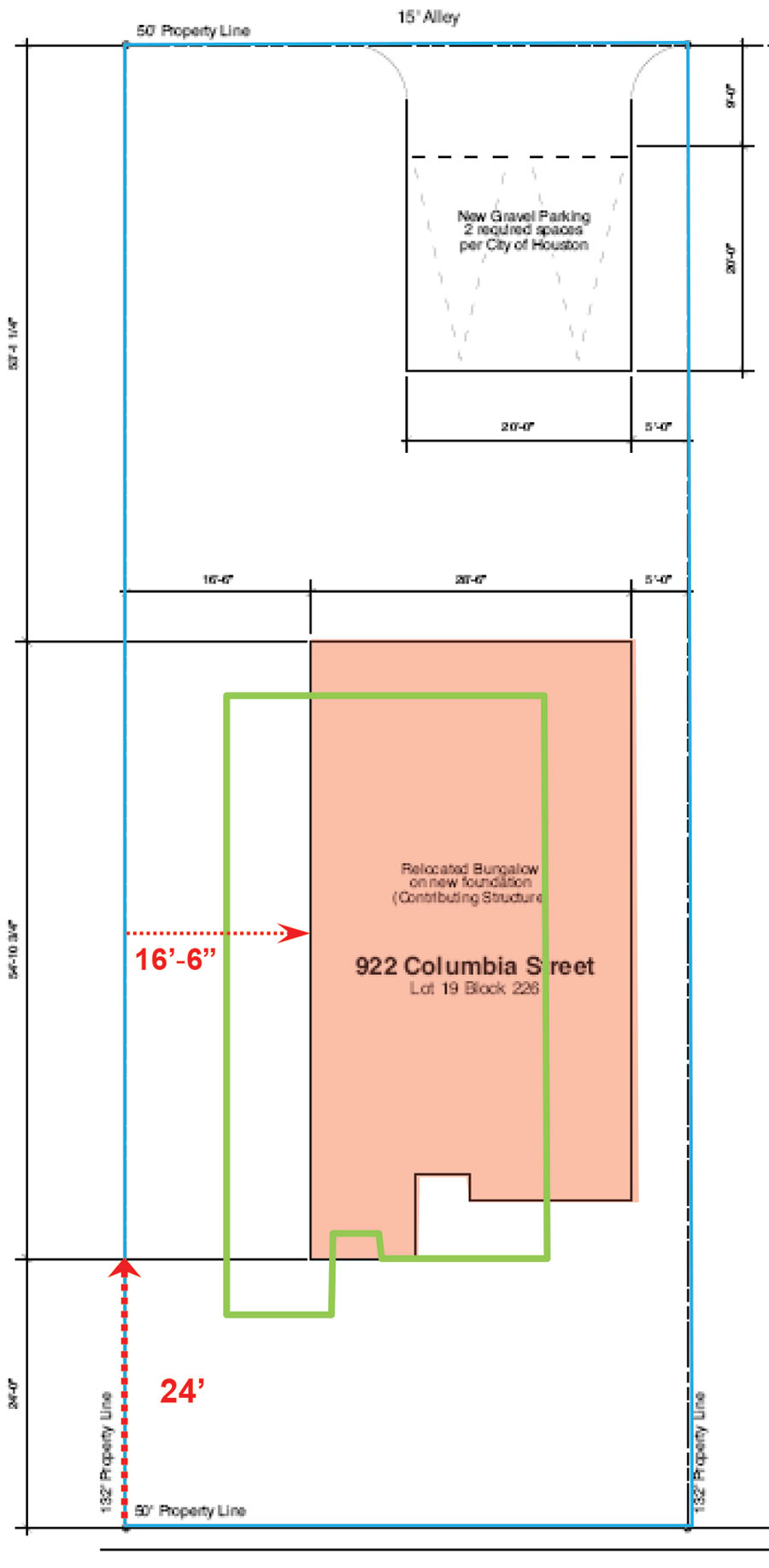


 The public comment period for the latest (and presumably final) draft of the design guidelines for the Houston Heights’s 3 historic districts ends today.
The public comment period for the latest (and presumably final) draft of the design guidelines for the Houston Heights’s 3 historic districts ends today.  “Once you start erasing history, who knows where it ends?” writes Cort McMurray in today’s Chronicle, scripting out a taste of potential dystopian franchise future for Houston and Texas’s most prominent landmarks should
“Once you start erasing history, who knows where it ends?” writes Cort McMurray in today’s Chronicle, scripting out a taste of potential dystopian franchise future for Houston and Texas’s most prominent landmarks should 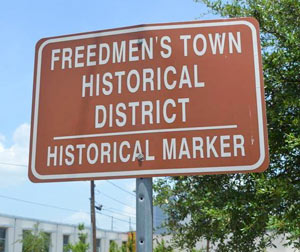 Following last month’s
Following last month’s 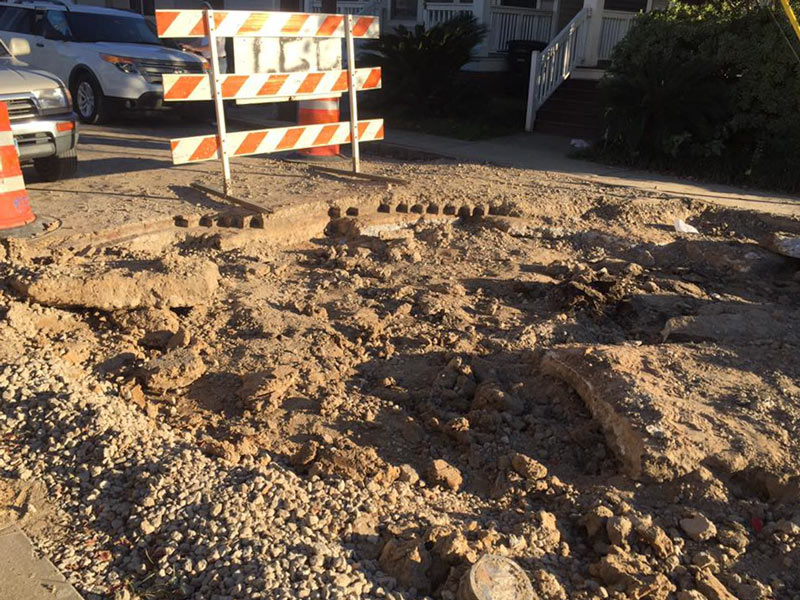
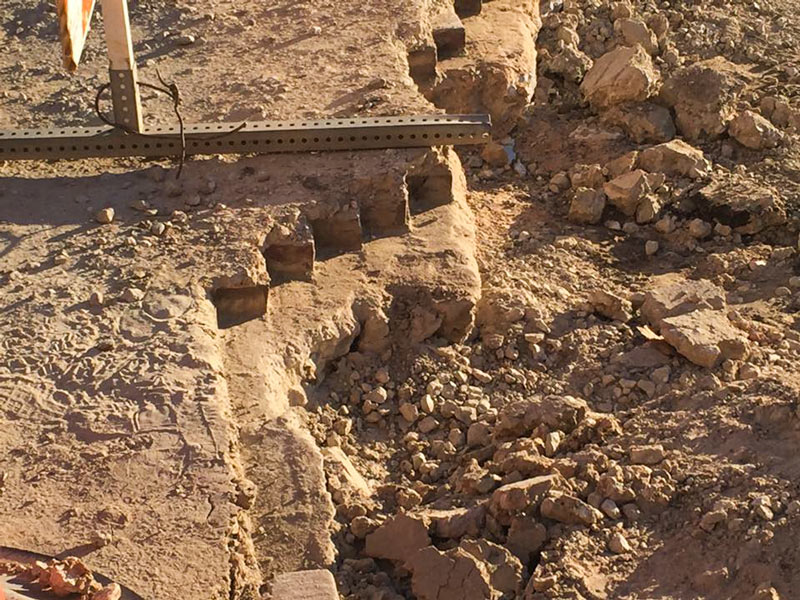



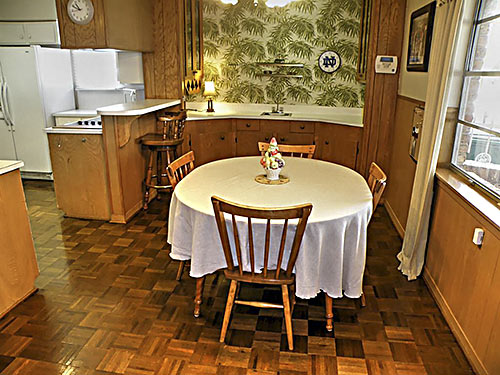

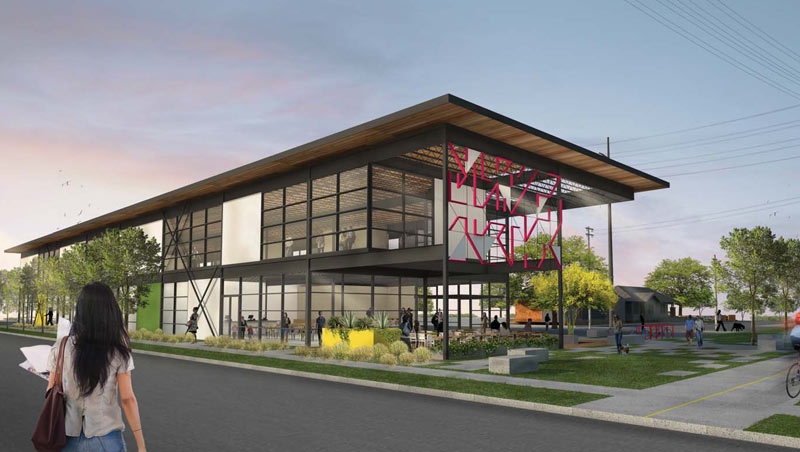
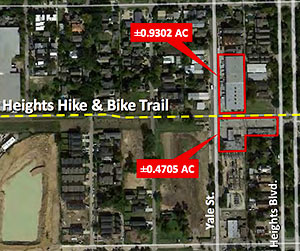
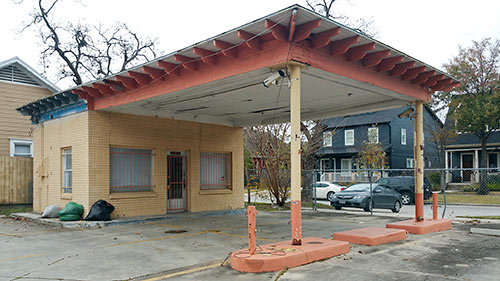
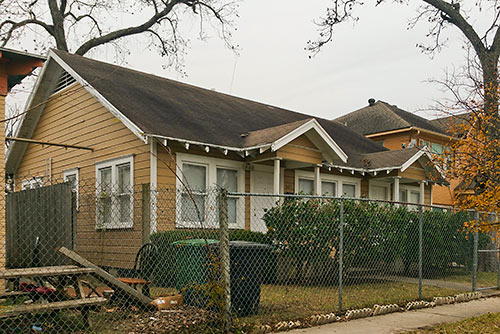
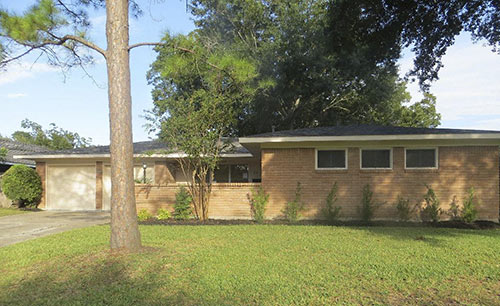

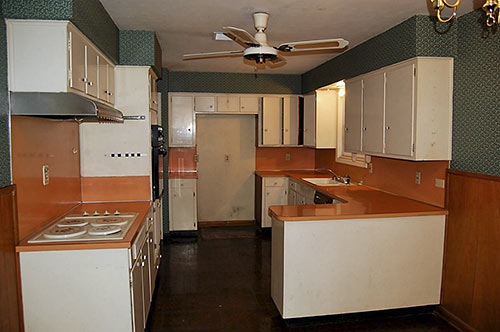
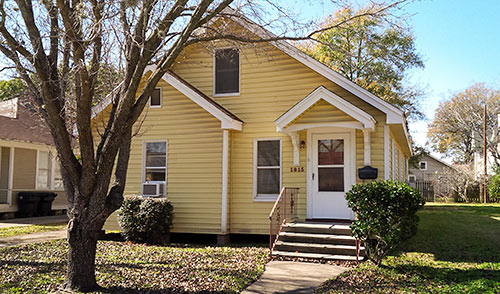
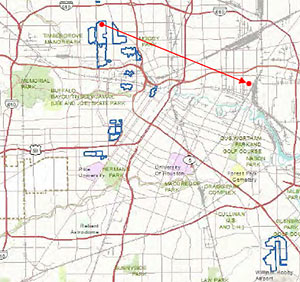
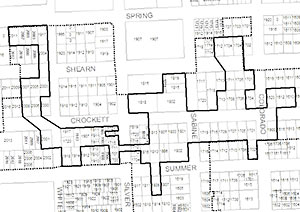 The High First Ward is the newest historic district in Houston, having been voted in by a 12-5 count of city council members this afternoon. The stringy selection of 55 lots (pictured at right),
The High First Ward is the newest historic district in Houston, having been voted in by a 12-5 count of city council members this afternoon. The stringy selection of 55 lots (pictured at right), 